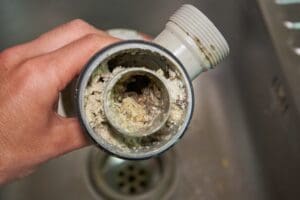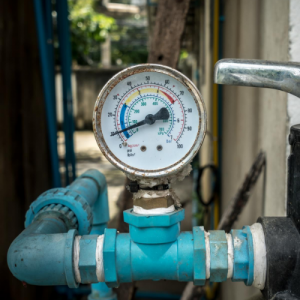Approaches to Tackle Low Water Pressure in Your Home
Approaches to Tackle Low Water Pressure in Your Home
Blog Article
Do you find yourself searching for related information about 4 Ways to Troubleshoot Low Water Pressure?

Low tide stress in your house can be an aggravating trouble, influencing everything from showering to washing recipes. If you're experiencing weak water flow, there are numerous possible causes and services to explore. In this overview, we'll review typical reasons for low tide stress and functional steps to address the concern successfully.
Intro to Low Water Pressure
Low water stress happens when the flow of water from your faucets, showers, and other components is weak than usual. This can make day-to-day jobs a lot more challenging and much less reliable. Understanding the sources of low water stress is important to discovering the appropriate option.
Common Causes of Low Water Stress
Faulty Stress Regulators
Stress regulatory authorities are responsible for maintaining regular water stress in your house. If they malfunction, it can lead to low water stress or unequal flow throughout the house.
Municipal Water Issues
Occasionally, the issue lies outside your home. Metropolitan water system issues, such as main line leakages or maintenance job, can briefly lower water pressure in your location.
Pipe Obstructions
Gradually, pipes can end up being obstructed with mineral deposits, debris, or particles, restricting the flow of water. This is an usual issue in older homes with galvanized steel pipes.
Corrosion
Rust within pipes can result in leakages and lowered water stress. Rust buildup can restrict water flow, particularly in maturing plumbing systems.
Just How to Detect Low Tide Stress
Evaluating Pipelines
Examine visible pipelines for indicators of leaks, deterioration, or clogs. Pay attention to any kind of uncommon noises, such as banging or rattling pipelines, which might show concerns within the plumbing system.
Consulting with a Plumber
If you're not able to pinpoint the cause of low tide pressure, think about employing a specialist plumber to perform a detailed examination. They can determine underlying concerns and suggest ideal remedies.
Examining Faucets and Components
Start by testing the water stress at different faucets and fixtures throughout your home. If the concern is separated to specific locations, it may suggest local troubles.
DIY Solutions to Fix Low Water Stress
Flushing Water Heater
Sediment buildup in the hot water heater can restrict circulation and minimize efficiency. Flushing the storage tank periodically assists get rid of sediment and keep optimum efficiency.
Inspecting Stress Regulatory Authority
Make certain that the pressure regulator is functioning correctly. Readjusting or changing the regulator can aid recover proper water pressure throughout your home.
Cleaning Up Aerators and Showerheads
Natural resources can gather in aerators and showerheads, reducing water flow. Remove and clean these components on a regular basis to boost water pressure.
Cleaning Clogs in Water Lines
For small clogs, attempt making use of a plumbing serpent or chemical drain cleaner to clear blockages in pipes. Beware when utilizing chemicals and adhere to safety standards.
When to Call a Professional Plumber
If DIY efforts fail to solve the concern or if you presume substantial plumbing issues, it's finest to look for help from a qualified plumber. They have the competence and devices to deal with complicated issues securely and properly.
Preventive Measures to Preserve Water Pressure
Setting Up a Pressure Booster
Think about setting up a pressure booster pump to improve water pressure in areas with consistently reduced circulation. This can be specifically valuable for multi-story homes or homes with high-demand fixtures.
Monitoring Water Use
Bear in mind water usage habits and stay clear of overtaxing the plumbing system. Easy adjustments, such as incredible showers and laundry lots, can assist keep appropriate water pressure.
Routine Maintenance
Arrange regular maintenance for your plumbing system to stop problems such as deterioration, leaks, and blockages. Attending to small problems early can assist stay clear of more significant repairs in the future.
Conclusion
Managing low water stress can be discouraging, yet recognizing the underlying reasons and implementing suitable solutions can bring back ideal circulation throughout your home. Whether it's cleaning aerators, checking pipelines, or talking to a plumber, taking proactive actions can guarantee a constant supply of water for your daily needs.
FOUR WAYS TO FIX LOW WATER PRESSURE NOW
Turning on a shower or faucet only to find the water comes out in a sad, slow drizzle is never a good feeling. How exactly are you supposed to wash a pan or take a quick shower when it takes 10 minutes just to rinse off a little soap? The good news is that when your water pressure is bad, there's always a cause: typically one that can be easily fixed. Here are some of the most common causes of low pressure and what you can do to fix the issue:
DEBRIS AND MINERAL DEPOSIT BUILDUPS
If you notice low water pressure from just one or two of the fixtures in your house, the problem likely has to do with debris buildup. Water is full of minerals and other debris, all of which can accumulate in your pipes and on your fixtures. This can cause a blockage that affects how much water flows through. To fix this, try filling a small plastic bag with white vinegar, and use a rubber band to hang it around your showerhead or faucet. Let the head of the fixture soak for a few hours, and the vinegar should loosen the deposits.
WATER LEAKS
Leaks are another common cause of low water pressure. If water is flowing out of your plumbing through a hole or crack before it can reach your fixture, the pressure coming out of the faucet or showerhead will be lower. A plumbing professional is your best bet for finding and repairing a leak in your water supply pipes.
Leaks are another common cause of low water pressure. If water is flowing out of your plumbing through a hole or crack before it can reach your fixture, the pressure coming out of the faucet or showerhead will be lower. A plumbing professional is your best bet for finding and repairing a leak in your water supply pipes.
A VALVE ISSUE
If you have low water pressure throughout your home, check your main shut-off valve to make sure it's completely open. You may also want to see if there's a pressure-reducing valve installed. If there is, have a plumber help you adjust the settings to get the pressure you're looking for.
OTHERS USING WATER
Believe it or not, your low water pressure could be caused by your neighbors. If you notice low pressure at certain times of day, it may be because you and the people living next to you have similar schedules - when everyone is showering at the same time, the pressure will be lower in every home. Low pressure throughout the neighborhood may also be caused by an issue with your municipal water supply. If that's the case, call the supplier to see if they're working on the issue.
https://www.rotorooter.com/blog/water-leaking/low-water-pressure-fixes/

I was made aware of that write-up about Dealing with Low Water Pressure in Your Home from an acquaintance on a different web address. Enjoyed reading our piece of writing? Please quickly share it. Help somebody else find it. Kudos for your time. Please check our blog back soon.
Website Report this page